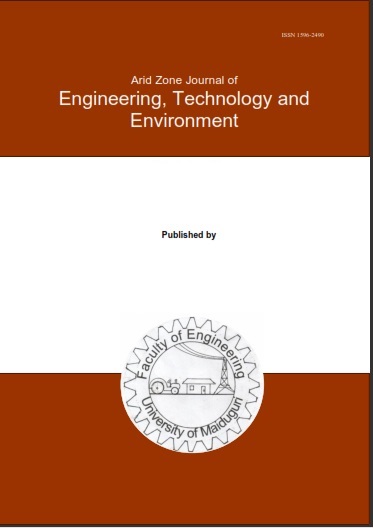Abstract
This paper explores the economic potential of using groundnut shell powder as a filler in biodegradable polylactic acid (PLA) composites. Groundnut shells, an abundant agricultural waste, are proposed as a low-cost reinforcement material to develop sustainable bioplastics. The investigation characterized and determined the mechanical properties of groundnut shell powder (GSP) filled PLA thermoplastic composites. Two different fiber sizes; 150 μm and 212μm were pulverized. The fiber loadings were 10 %, 20 %, and 30 % by weight. The GSP-PLA composites were prepared by use of internal mixer, followed by compression molding process. Tensile and Flexural properties were tested using universal testing machine (UTM). The tensile strength decreased from control sample (0 %) to 10 % by weight fiber loadings for all mesh sizes. In addition, the strength increased from 14.2 MPa and 15 MPa for 150 μm and 212 μm respectively, at a loading of 20%. The modulus increased from 712.9GPa for a control sample (0%) loading to 2344.9GPa at 30% loading for 150 μm. Furthermore, it increased to 1576 GPa for 212 μm. The tensile percentage elongation reduced at 10% loading compared to 0% control sample. Flexural strength and modulus increased for both mesh sizes at all the fiber loadings. However, at 30% fiber loadings, the flexural strength and modulus decreased slightly for 212μm size composites. The hardness of the composites increased for both mesh sizes at all the fiber loadings. It is presumed that the tensile properties performed good at 20% loading as deduced from the findings. while flexural properties increased for all loadings. The study identifies key application areas including packaging, construction, agriculture, and consumer products, highlighting their relevance in supporting eco-friendly startups and rural industries. The innovation aligns with global sustainable development goals (SDGs) number 7 and 8 and offers promising opportunities for green entrepreneurship, especially in agrarian economies.

This work is licensed under a Creative Commons Attribution-NonCommercial-NoDerivatives 4.0 International License.
Copyright (c) 2025 ARID ZONE JOURNAL OF ENGINEERING, TECHNOLOGY AND ENVIRONMENT

